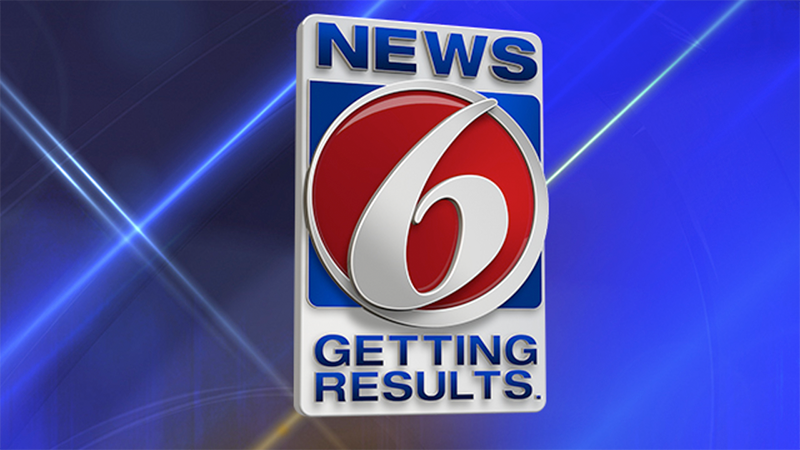CAPE CANAVERAL, Fla. – An experimental space plane and other small rockets could blast off from a new pad at Kennedy Space Center, and boosters could begin landing at the spaceport, under state proposals now under review by NASA, News 6 partner Florida Today reported.
Space Florida wants to develop Launch Complex 48 to support Boeing’s Phantom Express, the winner of a competition to demonstrate quick-turnaround launches for the Defense Advanced Research Projects Agency.
In addition, the state has proposed building three landing pads at KSC to provide more options for SpaceX or Blue Origin boosters returning from space, and possibly other reusable vehicles.
“We see a need,” said Jim Kuzma, senior vice president and general manager at Space Florida. “We’re continuing to assess anywhere where we think the infrastructure is going to be stressed as the launch cadence continues to increase.”
Launch Complex 48 would be tucked in between KSC’s pad 39A, now operated by SpaceX, and Launch Complex 41 to the south, the home of United Launch Alliance’s Atlas V rocket. The landing pads would be located near the northern edge of the center’s secure perimeter.
Both sites are highlighted in KSC’s master plan as available to be developed for those uses, and NASA had solicited interest. Each project would be subject to further environmental review.
Boeing has not officially selected a launch site for its 100-foot-tall Phantom Express, but all indications point to KSC or Cape Canaveral Air Force Station, with a first launch now targeted for 2021.
A version of a space shuttle main engine would power the unmanned vehicle’s reusable, winged booster through the atmosphere. After deploying an expendable second stage with a payload, the booster would return for a runway landing, likely at KSC’s former Shuttle Landing Facility, now operated by Space Florida.
Boeing staffs numerous former shuttle facilities at KSC, including an engine shop and three hangars, supporting the Air Force’s X-37B reusable space plane and CST-100 Starliner commercial crew capsule.
Space Florida says the Phantom Express work would add 254 jobs paying an average salary of $80,000.
DARPA’s Experimental Spaceplane Program, or XS-1, seeks to launch 10 times in 10 days, with a final flight placing a 3,000-pound payload in orbit. The goal is to show it is possible to launch rapidly and at much lower cost, potentially $5 million or less.
While driven by Boeing’s initial interest, the state envisions the new Launch Complex 48 as a shared facility.
Space Florida says it is in talks with eight other developers of rockets being designed to launch small satellites, so far identified only by code names.
Those discussions indicate “ample market demand to plan for a two-pad complex at LC 48,” according to Space Florida’s proposal.
Potential users could include the likes of Rocket Lab, Firefly Aerospace or Vector Space Systems. Rocket Lab, which currently flies from its own range in New Zealand, plans to announce a U.S. launch site this month, but might prefer other options along the Cape.
Space Florida expects the cost to build Complex 48 would be relatively modest, because smaller rockets typically don’t need the large towers, fuel tanks and other fixed infrastructure that larger rockets do.
Under the proposed KSC concept, the Phantom Express and its payloads would be processed in Space Florida’s Reusable Launch Vehicle hangar near KSC's three-mile runway. The rocket would roll to Complex 48 on a transporter. Mobile tankers would supply the liquid hydrogen and liquid oxygen propellants.
Similarly, the proposed landing pads would essentially be concrete slabs with access roads and utilities, modeled after the two pads SpaceX has built near the tip of Cape Canaveral at the former Launch Complex 13 — now designated Landing Zone 1.
As FLORIDA TODAY reported in December, the Air Force’s 45th Space Wing would welcome additional landing sites so that busy areas of the Cape wouldn’t need to be evacuated during mid-day missions.
“If we have to stop operations for a launch during the middle of day, it is severely impacting to other customers,” Brig Gen. Wayne Monteith, the Wing commander, said then.
That’s not yet a common occurrence, but launch rates are projected to grow to nearly 50 a year in the next several years, and in excess of 100 longer-term.
Landings at the proposed site on 25 acres of KSC might occasionally affect operations at pad 39B to the south, the future home of NASA’s Space Launch System rocket, or parts of Playalinda Beach to the north.
Space Florida hopes the pads, now referred to as Landing Zone 2, could be available by mid-2020, anticipating more landings by SpaceX and the company’s goal to launch and land missions twice within 24 hours, which might require multiple landing sites. Blue Origin also plans to recover New Glenn boosters that could begin launching in 2020, initially attempting landings at sea.
“Space Florida has engaged both operators in their need for sites to support powered return of boosters,” the proposal reads.
The state’s landing site proposal revised one submitted last November, providing more details KSC wanted.
KSC confirmed it is reviewing Space Florida’s proposals, but there is no timeframe yet for decisions.
